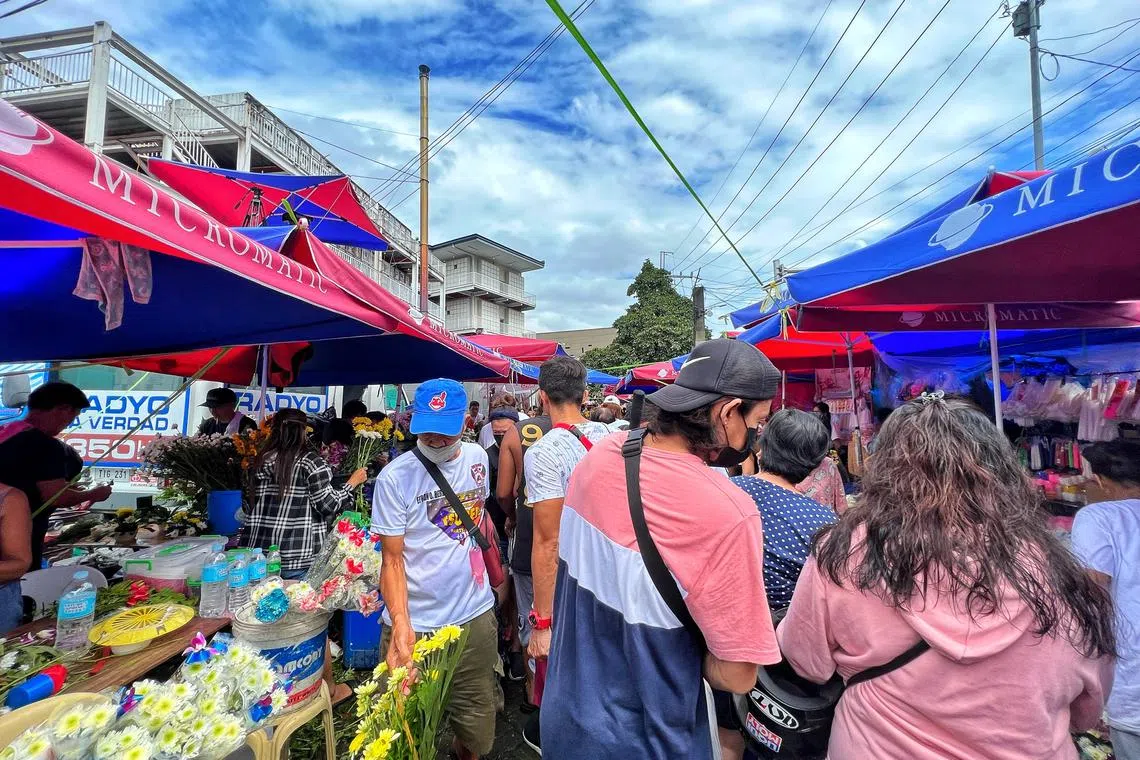Philippine economy shows unexpected strength as demand holds
Sign up now: Get insights on Asia's fast-moving developments

Gross domestic product rose 7.6 per cent in the three months through September from a year ago.
ST PHOTO: MARA CEPEDA
Follow topic:
MANILA – The Philippine economy grew faster than expected in the third quarter, boosting the case for the central bank to tighten monetary policy further to contain inflation amid a sustained demand recovery.
Gross domestic product rose 7.6 per cent in the three months through September from a year ago, the Philippine Statistics Authority reported on Thursday, compared to a revised 7.5 per cent in the second quarter.
The Philippine stock index rose briefly after GDP beat estimates before giving up gains, while the peso fell 0.3 per cent to 58.170 per dollar at 10.56am local time tracking weakness in regional peers.
Output grew 2.9 per cent last quarter from the April to June period, despite inflation in the July-September period far exceeding the central bank’s 2 per cent-4 per cent target. Consumer spending during the period rose 8 per cent from a year ago, supported by a strong demand recovery.
“Major source of growth from the demand side is from household consumption expenditure,” Economic Planning Secretary Arsenio Balisacan told reporters in Manila on Thursday. The nation is on track to achieve its 2022 growth target of 6.5 per cent-7.5 per cent, he said.
The latest GDP paints a better picture of the economy even as the central bank presses ahead with the most-aggressive policy tightening in two decades to cool price gains. Central bank Governor Felipe Medalla had flagged he will match on Nov 17 the Federal Reserve’s 75 basis-point rate hike, and signalled openness to continue moving in lockstep with the US monetary authority to defend the peso.
“It looks like the route that we have taken is taking the economy in the right direction,” President Ferdinand Marcos Jr was cited as saying in Cambodia by his press office.
The Philippines remains among Asia’s bright spots, as rising borrowing costs and a cost-of-living crisis dim the global economic outlook.
The data is “better than expected by a mile as Filipinos bear higher prices and borrowing costs for now,” said Mr Nicholas Mapa, a Manila-based senior economist at ING Groep NV.
“4Q GDP likely to still be robust should consumption hold and with the holidays likely to induce spending, we could see another impressive print.”

